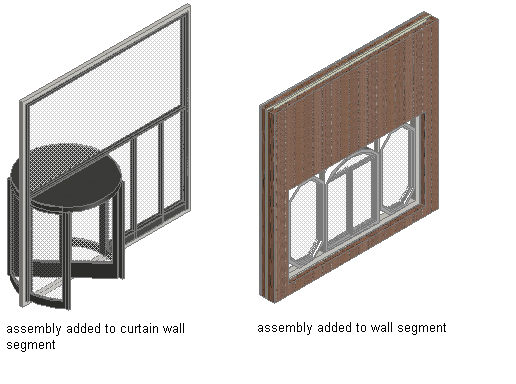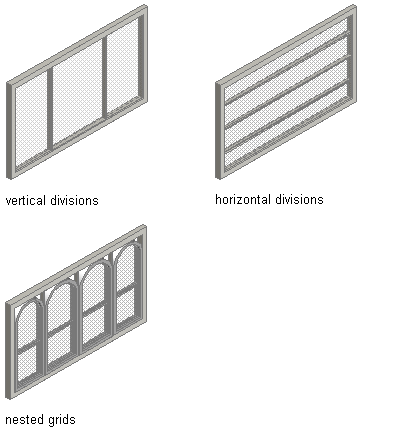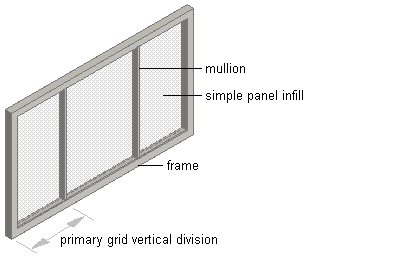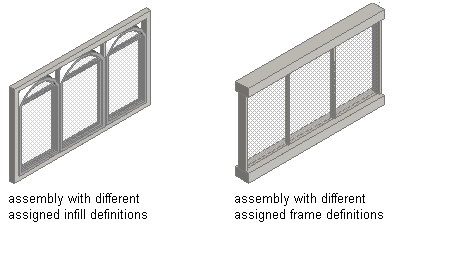Door and window assemblies provide a grid or framework for inserting objects such as windows and doors. With this framework, you can create complex window and door assemblies, which can then be inserted in standard walls or used as repeated elements in curtain walls.

Door and Window Assembly Grids
Door and window assemblies are made up of 1 or more grids. Each grid has either a horizontal division or a vertical division, but you can nest the grids to create a variety of patterns from simple to complex.

Elements of Grids
Grids are the foundation of curtain walls, curtain wall units, and door and window assemblies. Every grid has four element types:
- Divisions: Define the direction of the grid (horizontal or vertical) and the number of cells
- Cell Infills: Contain another grid, a panel infill, or an object such as a window or a door
- Frames: Define the edge around the outside of the primary grid and nested grids
- Mullions: Define the edges between the cells
Each element type is assigned a default definition that describes what elements of that type look like.
| Element type | Default definitions |
|---|---|
| Divisions | Vertical divisions with a fixed cell dimension of 3' |
| Cell Infills | Cells containing simple panels with a 2" thickness |
| Frames | Outer edges of grid 3" wide and 3" deep |
| Mullions | Edges between cells 1" wide and 3" deep |

You can create new element definitions and assign those definitions within the door and window assembly. For example, you can create multiple infill definitions and then assign different infills to specific cells in the grid. Likewise, you can create multiple frame definitions and then assign a different definition to each frame edge (top, bottom, left, right). This is also true for mullion definitions.

Experimenting with Door and Window Assembly Designs
The templates provided with AutoCAD Architecture 2024 toolset offer door and window assembly styles. Looking at these styles and experimenting with them makes it easier to understand door and window assembly behavior and create your own door and window assembly designs.

Door and Window Assembly Endcaps
Door and window assemblies that are anchored in a wall can have endcap styles applied to them. The endcap shapes for wall openings are defined in the wall style and are a property of the wall.